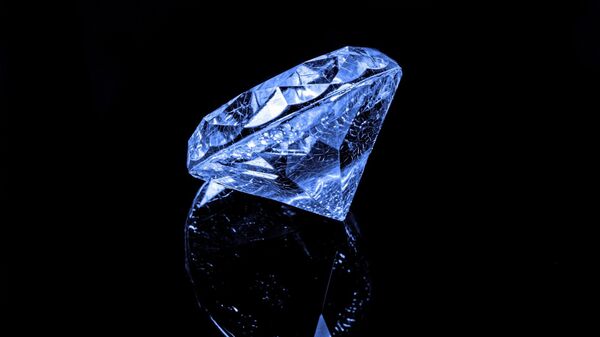It took just four minutes for the buyer to part with US$6.7 million for the precious stone which has passed through four European royal families for seven generations.
"The Farnese Blue is exceptionally rare, not least because natural fancy colour blue diamonds are the rarest and most prized colour diamonds in existence," Eddie LeVian, CEO of family run jewellers Le Vian told Sputnik.
The #FarneseBlue, a 6.16 ct GIA-graded pear-shaped Fancy dark gray-blue #diamond is coming to @Sothebys May 15 auction. Originally from India’s Golconda region, it was first given to Elisabeth Farnese, Queen of Spain in 1714. pic.twitter.com/58ZU43g8CW
— GIA (@GIAnews) May 3, 2018
The blue 6.16 carot pear shaped blue diamond was put up for sale for the first time in 300 years by Sotheby's Geneva.
First Look: The #FarneseBlue – Witness to 300 Years of #EuropeanHistory.
— Golden State (@GoldenState0303) May 16, 2018
Get a First Look at one of the most important historic #diamonds in the world. https://t.co/WSIeoMl96T via @YouTube
READ MORE: Diamonds Are Forever, & Now They're on Blockchain
The Farnese Blue was a wedding gift from the Philippine Islands to Italian princess Elisabeth Farnese, descendant of Pope Paul III in 1715 to mark her marriage to Philip King of Spain.
The diamond then passed through royal families in Spain, France, Italy and Austria before being made publicly available for sale.
READ MORE: Legendary Diamond Once Worn by Kings and Queens of France is Up for Sale
"The Farnese Blue was worn by men and women, travelling across Europe as Elizabeth and Philip of Spain's descendants married into Europe's most important dynasties. It adorned a pin belonging to Charles II and a tiara bearing diamonds which were thought to have belonged to Marie-Antoinette." Eddie LeVian, told Sputnik.
"Royal provenance can add value," Mr. LeVian says. "The legendary Beau Sancy, a 34.98-carat diamond worn by Marie de Medici in 1610 at her coronation as Queen Consort of Henri IV sold for $9.7million in Geneva in May 2012, soaring well over two and a half times its high estimate," Mr. LeVian says.
The diamond originates from the Golconda mines in India, the same source of the Hope Diamond and the Kohinoor diamond.
READ MORE: Diamonds Are Not Forever: India Sues British Queen for 'Stolen' Crown Jewel


